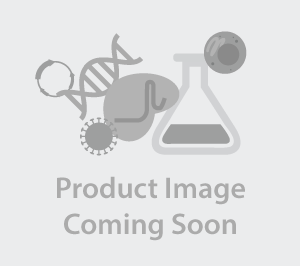Add-N-Pure™ Adenovirus Purification Kit

|
Cat. No.
|
A905 |
|---|---|
| Unit |
5 Purification Sets
|
| Cat. No. | A905 |
| Name | Add-N-Pure™ Adenovirus Purification Kit (5 U) |
| Unit | 5 Purification Sets |
| Category | Cloning Vectors & Packaging Mixes |
| Description | Recombinant adenovirus is the most efficient viral system developed to-date with regards to gene, siRNA, and miRNA delivery for in vitro and in vivo applications. However, high titers of purified recombinant adenovirus are required for many applications, especially in vivo gene delivery. Traditionally, purification of recombinant adenovirus is achieved by Cesium chloride density gradient ultracentrifugation. This process is technically demanding, time consuming, and requires the availability of ultracentrifugation equipment. Add-N-Pure™ adenovirus purification kits are a chromatography-based system for adenovirus purification and concentration. The kits represent a significant improvement to the traditional Cesium chloride ultra-centrifugation method in terms of easy manipulation, reliability, and efficiency. In fact, the entire Add-N-Pure™ purification process takes less than 2 hours to complete, whereas the Cesium chloride method takes 48 hours to complete the same task. The Add-N-Pure™ adenovirus purification kits can purify and concentrate recombinant adenovirus to a concentration between 1010 to 1013 pfu/ml,depending on the amount of viral input, whether the Mega or Giga filter is used, and whether buffer exchange is performed. Titers up to 1010 to 1012 pfu/ml can be obtained with Cat.#A902 and Cat.#A905 purification kits, whereas titers of 1011 to 1013 pfu/ml are achievable with the Cat.#A910 purification kit. However, it is important to note that the titers are significantly influenced by the original titer of the recombinant adenovirus input. Recombinant adenovirus which expresses proteins or regulatory DNAs toxic to packaging 293 cells, will result in notably low viral titer in the original stock. |
Print & Download Datasheet
Can it also be used for Retrovirus purification?
No, because retroviruses are too sensitive to survive the required centrifugation step.
Will the lack of FBS and calcium affect the functionality of the speedy lentivirus purification?
No, the function will not be affected.
What buffer should I use for resuspension?
The pelleted lentivirus can be resuspended in any appropriate buffer.
Can I remove the matrix as much as possible from the resuspended lentivirus?
Yes it is possible but the lentivirus should go through a buffer exchange procedure. Our recommended method is loading the resuspended lentivirus onto a 20mL-50uL ultrafiltration unit (30,000 MWCO), add PBS, then wash out the matrix by multiple centrifuge spins and discard the flowthrough. Once the exchange has occurred, use the desired volume of solvent to resuspend the lentivirus from the top filter and aliquot into storage containers.
What is the difference between Retro-, Lenti-, and Adeno- viruses?
Retrovirus: Classic, can integrate into the genome but with low transduction efficiency. They are useful for gene transfer and protein expression in cells that have low transfection efficiency with other transfection reagents. Lentivirus: Can integrate into the genome with relatively high transduction efficiency and they are very useful for cells that have low transfection efficiency with other transfection reagents. No special competent cells required, as they are stable plasmids. Lentiviruses are a powerful tool for stable gene transfer to both dividing and non-dividing cells in vitro and in vivo. Adenovirus: Only work transiently (about 7 days) but have almost 100% transduction efficiency. Adenoviruses can infect a broad range of cell types with the highest efficiency and infection is not dependent on active host cell division. A second key feature is that high virus titers and high-level gene expression can be obtained in most mammalian cells.
What are the correct concentration units for each recombinant viral particle?
For lentiviruses and retroviruses, they are measured in CFU/ml (colony-forming units per millilitre). Transduction with lentiviruses and retroviruses can cause the formation of colonies, which can be quantified for concentration. For AAV the titer is measured as genome copies per mL (GC/mL). Adenoviruses are measured as PFU/ml (plaque-forming units per millilitre). Transduction with adenoviruses will kill packaging cells, forming plaques in the process for quantification. The concentration for all three types of viruses can also be classified as IU/ml (Infectious Units/ml). Ultimately, the units refers to the viral particles and different units reflect the different assays involved.
What do I use to check if my cells were successfully immortalized by the SV40 agent?
We have an SV40 T antibody that can be used for the western blot analysis. The catalog number is G202. Otherwise, a qPCR primer can be designed on the SV40 gene for qPCR analysis. The sequence can be found in the link below: http://www.abmgood.com/pLenti%20SV40-Vector-Location-Map.html
What filter can I used for filter sterilization after the purification step?
We recommend a low protein binding filter with membrane pores of 0.2-0.45um. A few suggested membrane materials are PVDF, PES, and Supor (from Pall).
What are the primers to use for SV40 identification?
SV40 Forward Primer Sequence 5’ ACTGAGGGGCCTGAAATGA SV40 Reverse Primer Sequence 5’ GACTCAGGGCATGAAACAGG These are qPCR primers and the band size is 61 bp.
What advantages / disadvantages exist between the Lenti-SV40, -SV40T, and SV40T+t vectors?
There are simply differences in the content of all vectors due to customer demand for variety. Lenti-SV40 will contain the whole SV40 gene, -SV40T, the large T Antigen only, and -SV40T&t the large and small T antigens only. It is up to the end user to decide which vectors will best suit their project, however we have successfully used Lenti-SV40 (whole gene) in a wide range of immortalization projects.
What is the accession number for the SV40?
The SV40 covers the entire genome and the accession number is J02400.1. You can use this information to design primers for conventional PCR as well.
How long after transduction can the infection efficiency be observed?
You can observe transduction efficiency from 48 hours up to 5 days after infection.
What are the primers to use for SV40T and SV40T tsA58 detection?
PCR primers: SV40T Forward Primer Sequence 5’ AGCCTGTAGAACCAAACATT 3' SV40T Reverse Primer Sequence 5’ CTGCTGACTCTCAACATTCT 3' The two primers should amplify the region between 3677-4468bp, giving a 792bp fragment.
What is the sequence of the SV40 large T antigen?
This information can be accessed on this page by clicking on "pLenti-SV40-T" under vector map. The Large T antigen is at position 5079-5927.
In the final solution what medium and FBS should I use to keep the concentrated viruses?
When using our Speedy Lentivirus Purification (Cat#LV999), the choice of which medium and FBS to use to keep the concentrated viruses will vary based upon the intended downstream application of the lentivirus; i.e. depending on the complete media required for your cell line of interest. You can re-suspend the pellet in the complete media of the cell line which will be infected with this virus prep, to avoid dilution. For example, if 293T cells were the intended cell line, we would recommend using DMEM + 10% FBS. If in doubt, serum-free DMEM is typically a safe choice, however the required dilution will be a factor to consider.
For G221 and LV620, what does the 'V12' in RasV12 mean?
The V12 means that amino acid # 12 is mutated from a Valine to a Glycine. Other than that, the sequence matches the coding region of HRAS perfectly (NM_005343).
Where is the SV40T tsA58 gene sequence?
The SV40T tsA58 gene is located between 3138-5264bp, with the Alanine-to-Valine mutation at amino acid 438.
- Siu, CW et al. "Modeling of lamin A/C mutation premature cardiac aging using patient-specific induced pluripotent stem cells" Aging (Albany NY) 4(11):803-822 (2012).
This product has no review yet.
Controls and Related Product:


